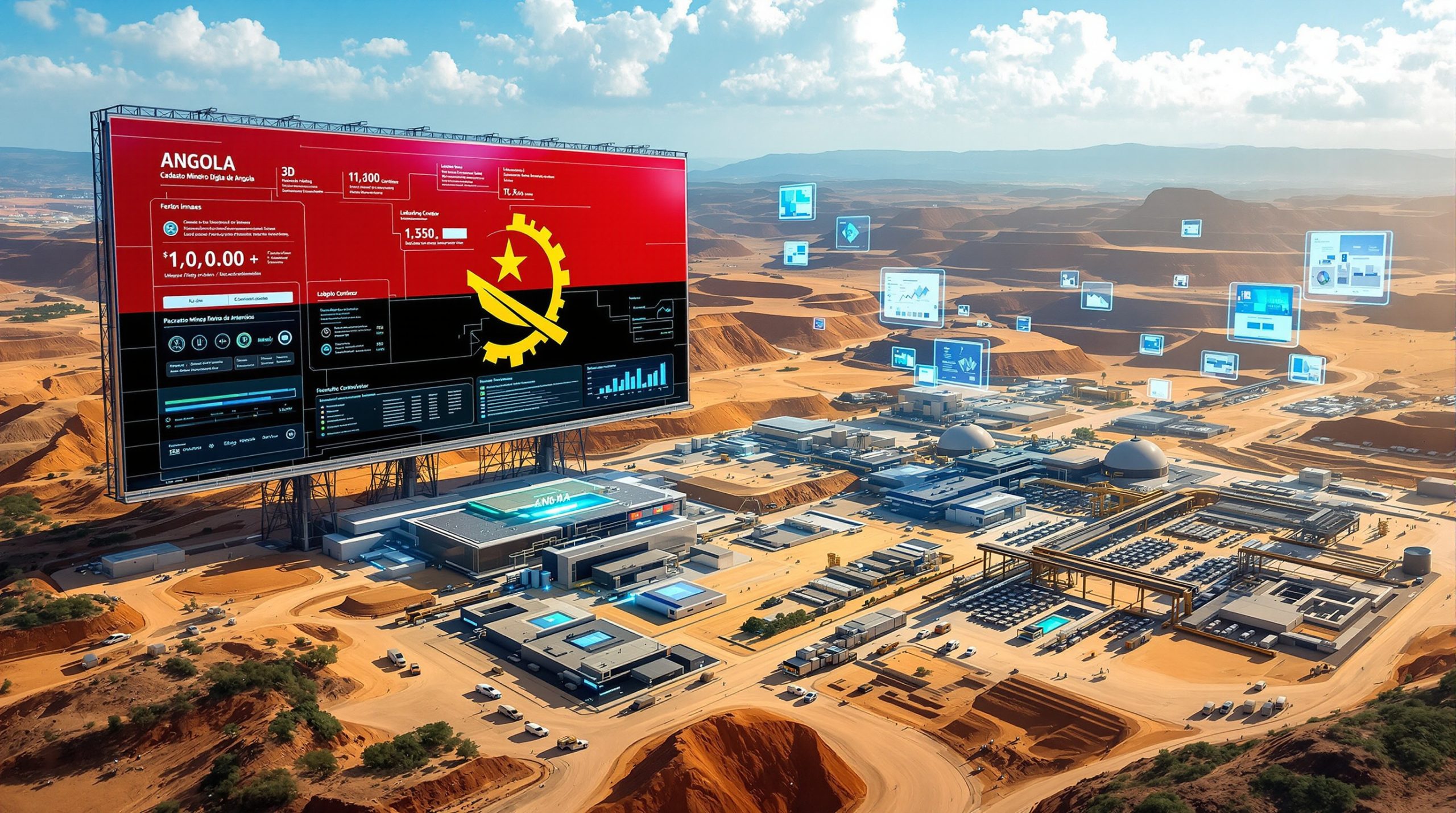Understanding Titanium Mining Infrastructure Modernization
The Moma titanium mine upgrade and transition project represents one of the most significant industrial undertakings in modern mineral processing, requiring sophisticated floating equipment systems and artificial pond management. Furthermore, the technical challenges of mineral processing become exponentially more complex when operations must relocate entire processing facilities while maintaining continuous production schedules. This complexity demonstrates the advanced engineering principles necessary for large-scale mineral extraction operations, particularly within the context of modern mine planning methodologies.
Large-scale titanium operations utilise floating dredge systems that pump mineral sands from pond walls into wet concentrator plants (WCPs). These systems must operate with precision to maintain consistent throughput while managing variable ore compositions. Moreover, the integration of multiple dredges feeding into centralised processing facilities requires careful coordination of equipment capacity, material flow rates, and processing optimisation.
Processing capacity specifications for modern titanium operations reach 3,500 tonnes per hour for individual plant systems, representing substantial industrial scale operations. The capital investment required for such infrastructure modernisation totals $341 million in documented cases, with approximately 85% of project costs typically deployed during the initial implementation phase.
Resource base characteristics significantly influence processing methodology selection. Operations working with deposits containing over 6.4 billion tonnes of proven reserves must implement long-term infrastructure solutions capable of supporting extended operational timelines beyond 2045 planning horizons.
Key Processing Infrastructure Components
Modern titanium mining operations require several critical infrastructure elements:
• Floating dredge systems with capacities exceeding traditional mining equipment
• Artificial pond management systems for controlled extraction environments
• Wet concentrator plants designed for continuous operation
• Desliming circuits for clay particle separation
• Tailings storage facilities with environmental compliance systems
• Power infrastructure supporting high-capacity electrical demands
The integration of these systems requires extensive commissioning periods, with optimisation work potentially extending into multi-year timelines to achieve consistent operational performance.
Why Do Mining Operations Require Multi-Year Transition Planning?
Industrial mining transitions involve coordinating multiple engineering disciplines simultaneously, creating complex project management challenges that cannot be compressed without compromising operational safety and efficiency. Additionally, the Moma titanium mine upgrade and transition project demonstrates the sophisticated planning required for large-scale mineral operations through its coordinated approach to equipment relocation.
Engineering Coordination Requirements
The fabrication and transportation of specialised equipment represents a critical path component within overall transition timelines. Pontoon construction for floating systems involves manufacturing 42 individual units weighing between 40-60 tonnes each, requiring specialised fabrication facilities and complex maritime transportation logistics.
Equipment installation must be coordinated with power infrastructure upgrades, including 22kV and 110kV electrical systems, road infrastructure improvements for heavy equipment access, and environmental compliance system integration. These parallel work streams require careful sequencing to avoid construction conflicts and ensure system compatibility.
Operational Continuity Management
Mining operations must balance transition requirements with production continuity to maintain revenue streams and customer supply commitments. Rather than ceasing operations during equipment transitions, sophisticated companies implement staged commissioning processes that allow continued production at reduced rates while new systems are integrated and optimised.
The financial implications of production interruption often exceed the costs of extended transition timelines. Development capital spending adjustments between $170 million and $175 million demonstrate how timeline flexibility allows companies to optimise cash flow timing while maintaining project momentum.
Technical Integration Challenges
Commissioning new processing equipment requires extensive system integration testing that cannot be fully completed until operational conditions are achieved. Furthermore, automation systems require real-world operational experience to identify and resolve integration issues between new equipment and existing infrastructure.
| Transition Phase | Duration | Critical Activities |
|---|---|---|
| Equipment Fabrication | 12-18 months | Pontoon construction, dredge manufacturing |
| Transportation | 3-6 months | Maritime shipping, overland logistics |
| Installation | 6-12 months | Equipment positioning, infrastructure connection |
| Commissioning | 6-18 months | System testing, optimisation, performance validation |
Documented operational experience shows that equipment installation and initial commissioning can require approximately two months of concentrated effort, with ongoing optimisation work extending potentially into the following operational year.
What Technical Challenges Arise When Processing Different Ore Compositions?
Ore composition variations between mining zones create significant processing challenges that require specialised equipment modifications and operational adjustments. Consequently, these challenges align with broader industry evolution trends that emphasise adaptive processing methodologies. The concentration of fine clay particles, known as slimes content, varies substantially between different ore deposits, necessitating adaptive processing methodologies to maintain mineral recovery rates and operational efficiency.
Slimes Content Management
Clay particle interference represents one of the most significant technical challenges in titanium minerals processing. Higher concentrations of fine clay particles in certain ore zones require specialised separation circuits to prevent contamination of valuable mineral concentrates. The implementation of upfront desliming circuits becomes essential for maintaining processing efficiency when transitioning between ore zones with different compositional characteristics.
Feed preparation systems must be designed to accommodate variable ore characteristics while maintaining consistent throughput management. Therefore, automated control systems become critical for adjusting processing parameters in real-time based on incoming ore composition variations.
Processing System Adaptations
The integration of new feed preparation modules has demonstrated the ability to contribute to improved mineral recoveries when properly integrated with existing processing infrastructure. These systems require careful calibration to optimise performance across different ore compositions whilst implementing AI-driven efficiency solutions.
Technical specifications for processing system modifications include:
• Enhanced desliming capacity for clay particle separation
• Variable feed rate management for compositional adaptation
• Automated control integration for real-time process optimisation
• Tailings management upgrades for increased slimes handling
• Water recycling systems for environmental compliance
Operational Performance Optimisation
Processing plants designed for 3,500 tonnes per hour capacity must achieve consistent throughput across variable ore compositions to meet production targets. The achievement of design specifications on individual components does not guarantee system-wide performance optimisation, requiring comprehensive integration testing and operational refinement.
Commissioning challenges often arise from bottlenecks in specific system components rather than overall design inadequacy. However, tailings management systems can restrict overall throughput and plant utilisation if not properly sized for the full range of ore compositions encountered during mining operations.
How Does Equipment Modernisation Impact Production Economics?
Capital investment strategies for mining equipment modernisation must balance immediate expenditure requirements with long-term operational benefits and cash flow optimisation. The deployment of $341 million in capital expenditure represents a substantial commitment to infrastructure enhancement, requiring careful financial planning and risk management considerations through data-driven operations planning.
Investment Timing and Cash Flow Management
The phased deployment of capital, with approximately 85% of total project costs expected to be spent during the initial implementation phase, demonstrates strategic cash flow management that aligns expenditure timing with operational requirements. This approach allows companies to maintain financial flexibility while ensuring adequate funding for critical infrastructure components.
Development capital spending revisions between $170 million and $175 million reflect the dynamic nature of large-scale project management, where timing adjustments between fiscal periods allow for optimised resource allocation and contractor availability.
Funding Structure Considerations
Mining companies typically fund major infrastructure upgrades through a combination of operational cash flow and existing debt facilities, avoiding the need for additional equity financing or project-specific debt arrangements. This funding approach demonstrates confidence in operational cash generation capabilities and existing financial capacity to support major capital investments.
The decision to fund transitions through internal resources rather than external financing reflects:
• Strong operational cash flow generation capabilities
• Existing debt facility capacity for supplemental funding needs
• Risk mitigation through proven internal financing approaches
• Financial flexibility maintenance for future opportunities
• Shareholder value protection through debt-equity optimisation
Production Impact Assessment
Equipment modernisation can result in temporary production reductions during commissioning periods, requiring strategic guidance adjustments to maintain market confidence and customer relationship management. Production guidance reductions to 870,000 tonnes to 905,000 tonnes of ilmenite alongside 8,500 tonnes to 9,500 tonnes of rutile demonstrate the short-term production impact of major equipment transitions.
Companies must weigh the costs of production interruption against the benefits of enhanced long-term operational capacity. The decision to maintain existing production levels rather than increase alternative mining methods during transitions reflects sophisticated cost optimisation analysis.
What Role Does Ore Reserve Distribution Play in Mining Strategy?
Ore reserve distribution significantly influences long-term mining strategy and infrastructure investment decisions. The concentration of substantial mineral resources within specific mining zones can eliminate the need for multiple infrastructure transitions during a mine's economic life, providing strategic advantages for operational planning and capital allocation.
Resource Concentration Analysis
Mining operations with over 70% of total mineral resources concentrated within a single ore zone benefit from simplified long-term planning and reduced infrastructure relocation requirements. The availability of 6.4 billion tonnes of proven reserves within a concentrated area eliminates uncertainty regarding future mining locations and infrastructure requirements.
Total resource bases exceeding 9 billion tonnes provide substantial operational security, supporting mine life extensions beyond 2045 planning horizons and justifying major capital investments in processing infrastructure.
Strategic Resource Management Benefits
Concentrated ore reserves offer several strategic advantages for mining operations:
• Single transition requirement for remaining mine life
• Elimination of future major infrastructure relocations
• Optimised processing plant utilisation over extended timelines
• Reduced operational complexity through zone consolidation
• Enhanced return on infrastructure investment through extended utilisation periods
Long-Term Planning Implications
The concentration of mineral resources within accessible mining zones allows for comprehensive long-term planning that extends decades into the future. This planning certainty enables companies to make substantial capital investments with confidence in resource availability and operational continuity.
Mine planning extending beyond existing operational timelines provides strategic flexibility for responding to market conditions, technological advancement, and regulatory changes while maintaining core operational capacity and infrastructure utilisation.
How Do Floating Dredge Systems Function in Artificial Mining Environments?
Floating dredge systems represent sophisticated engineering solutions for mineral extraction in controlled aquatic environments. These systems operate within artificial freshwater ponds where dredges pump mineral sands from pond walls into processing facilities, allowing for continuous extraction while maintaining environmental controls and operational efficiency.
System Configuration and Capacity
Modern titanium mining operations typically utilise four dredges feeding three floating wet concentrator plants, with individual plants representing significant portions of total mining capacity. The largest processing units can represent approximately 50% of total mining capacity, making their operational reliability critical for overall production performance.
The integration of multiple dredges with centralised processing facilities requires careful coordination of material flow rates, processing capacity, and equipment maintenance scheduling to maintain consistent operational performance.
Technical Operating Principles
Floating dredge systems function through several integrated components:
• Suction dredging equipment for mineral sand extraction
• Floating platform systems for equipment positioning and stability
• Material pumping systems for sand transport to processing facilities
• Pond management systems for water level and quality control
• Processing integration systems for material flow coordination
The artificial pond environment provides controlled conditions for dredging operations, allowing for consistent water depth management, environmental monitoring, and operational safety protocols that would be more difficult to maintain in natural water bodies.
Environmental Management Integration
Artificial mining environments enable comprehensive environmental control systems, including water recycling, tailings management, and habitat protection measures. The controlled nature of these systems allows for continuous monitoring of water quality, sediment management, and ecological impact mitigation.
Advanced tailings management systems integrated with floating operations ensure proper handling of processing waste management solutions whilst maintaining environmental compliance and operational efficiency.
What Market Factors Influence Production Timing Decisions?
Market conditions significantly influence production scheduling decisions and operational strategy implementation. Rather than maintaining maximum production rates regardless of market conditions, sophisticated mining operations align production timing with demand patterns, cost optimisation opportunities, and inventory management strategies.
Demand-Supply Optimisation Strategy
Strategic production management involves balancing output rates with market demand to optimise pricing and maintain customer relationships while managing operational costs. The decision to adjust production guidance based on market conditions rather than forcing maximum output demonstrates sophisticated market response capabilities.
Companies may choose not to compensate for reduced primary production through alternative methods that would elevate operating costs, particularly when market conditions suggest adequate demand satisfaction through existing production and inventory management.
Market Response Considerations
Several factors influence production timing optimisation:
• Product demand variations affecting pricing and sales volume
• Inventory management capabilities for supply continuity during production adjustments
• Operating cost implications of alternative production methods
• Customer relationship management requiring consistent supply reliability
• Market timing alignment with demand cycles and competitive positioning
Production Flexibility Benefits
The ability to adjust production rates based on market conditions provides strategic advantages in managing profitability and resource utilisation. Companies with strong inventory management capabilities can maintain customer supply commitments while optimising production costs during equipment transitions or market downturns.
This flexibility allows mining operations to respond effectively to market volatility while maintaining operational integrity and financial performance consistency.
How Does Commissioning Progress Affect Operational Targets?
Commissioning delays in complex mining operations can significantly impact production targets and require strategic adjustments to maintain market confidence and operational integrity. The Moma titanium mine upgrade and transition project demonstrates how integration of new high-capacity equipment with existing processing infrastructure presents numerous technical challenges that may extend optimisation timelines beyond initial projections.
Performance Optimisation During Ramp-Up
Individual equipment components may achieve design specifications while system-wide integration requires additional optimisation work to achieve consistent operational performance. The achievement of targeted processing rates at times without consistency demonstrates the complexity of integrating multiple system components into coordinated operations.
Most major new components can be commissioned and performing to design specifications while system bottlenecks restrict overall throughput and utilisation rates. This performance gap between individual component capability and system-wide efficiency requires comprehensive optimisation work extending potentially into subsequent operational periods.
Specific Commissioning Challenges
Documentation of commissioning experiences reveals several common challenge areas:
• Tailings management bottlenecks limiting plant utilisation capacity
• Automation system integration requiring resolution of initial operational issues
• Feed preparation system optimisation for consistent material flow management
• Performance consistency achievement across all integrated plant components
• System-wide coordination between individual high-performing components
The resolution of automation issues with dredging systems demonstrates that equipment performance can improve substantially once initial integration challenges are addressed through operational experience and technical refinement.
Production Guidance Impact
Commissioning delays necessitate production guidance adjustments to maintain realistic market expectations and operational credibility. The reduction of production guidance to 870,000 tonnes to 905,000 tonnes of ilmenite alongside 8,500 tonnes to 9,500 tonnes of rutile reflects the impact of extended optimisation requirements on short-term production capability.
"The complexity of achieving system-wide performance optimisation demonstrates that modern mineral processing operations require extended commissioning periods to reach full operational potential, even when individual components meet design specifications."
Companies must balance the pressure for rapid production ramp-up against the need for thorough system optimisation to ensure long-term operational reliability and efficiency. This balance often results in extended commissioning timelines that prioritise sustainable performance over aggressive production targets.
What Environmental Considerations Drive Infrastructure Design?
Environmental stewardship requirements significantly influence infrastructure design decisions in modern mining operations. The construction of specialised tailings storage facilities and implementation of advanced waste management solutions reflect contemporary environmental compliance standards and sustainable mining practices. According to Kenmare Resources, these infrastructure developments are crucial for maintaining operational efficiency whilst meeting stringent environmental requirements.
Sustainable Infrastructure Development
Environmental considerations drive several key infrastructure design elements:
• Specialised tailings storage facility construction for waste management
• Advanced slimes separation and management systems for clay particle handling
• Water recycling and conservation systems for resource efficiency
• Minimised environmental footprint through optimised processing layouts
• Environmental monitoring integration for continuous compliance verification
The implementation of upfront desliming circuits serves dual purposes of operational efficiency improvement and environmental impact reduction by separating clay particles that could otherwise complicate waste management processes.
Water Management Systems
Artificial mining pond systems require sophisticated water management capabilities to maintain operational efficiency while meeting environmental compliance requirements. The integration of water recycling systems reduces freshwater consumption while maintaining the controlled aquatic environments necessary for floating dredge operations.
Advanced tailings management systems must handle varying waste compositions while maintaining environmental protection standards and operational efficiency requirements.
How Do Global Titanium Markets Respond to Production Capacity Changes?
Global titanium markets demonstrate sensitivity to production capacity changes from major operations, particularly those representing significant portions of worldwide mineral supply. Furthermore, the strategic importance of large-scale titanium operations extends beyond individual company performance to broader market stability and supply chain security. According to Mozambique business reports, the Moma titanium mine upgrade and transition project represents a crucial development for global supply chains.
Market Position and Supply Chain Impact
Operations positioned among the world's largest titanium minerals producers influence global supply chain dynamics through production scheduling decisions, capacity modifications, and operational transitions. Strategic locations providing international shipping access enhance market influence and customer supply security.
The diversification of product portfolios including ilmenite, rutile, and zircon provides multiple revenue streams while serving various industrial applications and market segments.
Strategic Market Considerations
Several factors enhance global market positioning:
• Global leadership in titanium minerals production volumes
• Strategic geographic location for international shipping access
• Diversified product portfolio serving multiple industrial applications
• Long-term supply security for industrial customers through substantial reserve bases
• Operational reliability supporting consistent market supply
The ability to maintain shipment schedules during operational transitions through inventory management demonstrates market responsibility and customer relationship management that supports long-term market positioning.
What Future Developments Could Enhance Operational Efficiency?
Continued optimisation work extending into future operational periods suggests ongoing opportunities for enhancing processing capabilities and operational efficiency. Advanced automation systems, predictive maintenance technologies, and real-time performance monitoring represent potential areas for further operational enhancement within the broader framework of modern mine planning.
Technology Integration Opportunities
Future operational efficiency improvements may include:
• Advanced process control implementation for automated optimisation
• Predictive maintenance technology integration for equipment reliability enhancement
• Real-time performance optimisation systems for continuous efficiency improvement
• Sustainable technology adoption for reduced environmental impact and operational costs
• Data analytics integration for enhanced decision-making capabilities
The implementation of sophisticated automation systems during current transitions provides foundations for future technological enhancements that could further optimise processing efficiency and operational reliability.
Innovation Pathway Development
Mining operations with substantial reserve bases and extended operational timelines provide excellent platforms for implementing innovative technologies and operational methodologies. The combination of proven operational foundations with technological advancement opportunities positions these operations for continued efficiency improvements.
Long-term operational commitments extending beyond 2045 planning horizons provide sufficient timelines for implementing and optimising advanced technologies while achieving substantial returns on technological investments.
Disclaimer: This analysis is based on publicly available information and should not be considered as financial or investment advice. Mining operations involve substantial risks and uncertainties that can significantly impact operational and financial performance. Readers should conduct independent research and consult with qualified professionals before making investment decisions related to mining companies or commodities markets.
Looking to capitalise on titanium mining opportunities?
Discovery Alert's proprietary Discovery IQ model delivers real-time alerts on significant titanium and mineral discoveries across the ASX, transforming complex mining data into actionable insights that position investors ahead of market movements. Explore how major mineral discoveries can generate substantial returns by examining historic examples of exceptional outcomes, then begin your 30-day free trial today to secure your market-leading advantage.




